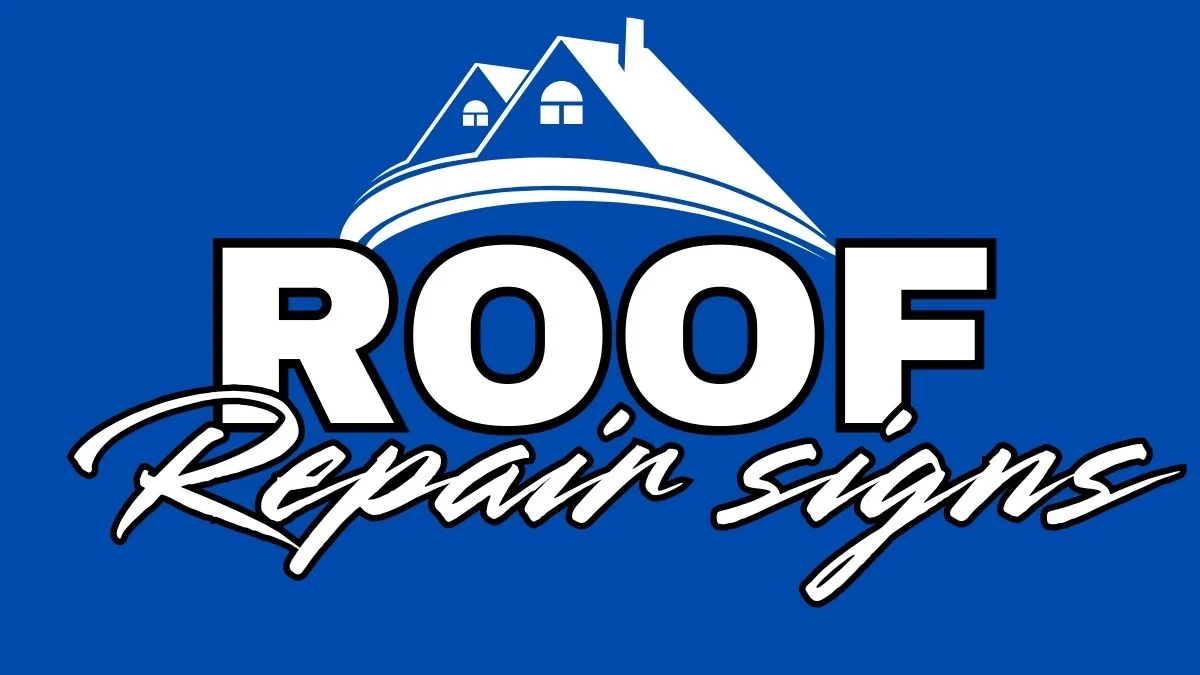SERVICES
Signs Your Roof Needs Immediate Repair and How to Address Them

A well-maintained roof is essential for protecting your home from the elements, maintaining energy efficiency, and preserving structural integrity. However, many homeowners overlook early warning signs of roof damage until costly problems arise. Addressing roof repair needs promptly can prevent further deterioration, saving both time and money in the long run.
Recognizing when a roof needs repair requires understanding the visible and hidden indicators of damage. From missing shingles to leaks and structural concerns, spotting issues early ensures that repairs are made before they lead to extensive damage.
This article explores the most common signs that indicate immediate roof repair is necessary and provides practical solutions to address them effectively.
Table of Contents
1. Visible Shingle Damage
Shingles are the first line of defense against weather and environmental elements. When they become damaged or go missing, the roof’s ability to provide protection is compromised.
Signs of Shingle Damage:
- Missing or Loose Shingles: Exposed underlayment or bare roof spots indicate shingle loss, which can lead to leaks.
- Curling or Buckling Shingles: Warped shingles suggest moisture damage or aging materials that require replacement.
- Cracked or Broken Shingles: Cracks weaken the roof’s surface, allowing water infiltration.
How to Address It:
- Replace missing or broken shingles immediately to prevent further exposure.
- Schedule an inspection with a roofing company to assess the extent of damage and determine whether a full roof replacement is needed.
2. Roof Leaks and Water Stains
Leaks are one of the most urgent signs that a roof needs immediate attention. Even minor leaks can cause severe structural damage if left untreated.
Signs of a Leak:
- Water stains on ceilings or walls indicate moisture penetration from above.
- Dripping water in the attic or visible moisture marks near vents and chimneys suggest compromised flashing or roofing materials.
- Mold growth inside the home can result from persistent dampness caused by leaks.
How to Address It:
- Identify the source of the leak and apply a temporary patch using roofing cement or a tarp.
- Contact a roofing company to perform a thorough assessment and repair the leak before it worsens.

3. Sagging Roof Sections
A sagging roof is a critical warning sign of structural weakness, often caused by prolonged water damage, rotting wood, or an improperly supported roof deck.
Signs of Roof Sagging:
- Noticeable dips or uneven areas on the roof’s surface.
- Sagging rafters or ceiling panels inside the home.
- Pooling water on the roof, indicating poor drainage.
How to Address It:
- Reinforce the roof deck and underlying support beams if minor sagging is present.
- If the structural damage is severe, a roof replacement may be necessary to ensure the safety of the home.
4. Granule Loss from Shingles
Asphalt shingles have a protective layer of granules that shield them from the sun and weather damage. When these granules begin to wear off, the roof becomes more vulnerable to deterioration.
Signs of Granule Loss:
- Excessive granules in gutters and downspouts after rain.
- Bald spots on shingles, indicating the protective coating is wearing away.
- Shingles appearing darker or unevenly discolored.
How to Address It:
- Clean out gutters regularly to prevent granules from clogging the drainage system.
- Replace severely damaged shingles to maintain the roof’s integrity.
- If granule loss is widespread, consult a roofing company to determine if a full roof replacement is needed.
5. Damaged or Rusted Flashing
Flashing is the metal material used around chimneys, vents, and skylights to prevent water from seeping into the roof structure. When flashing deteriorates, leaks become a significant concern.
Signs of Flashing Damage:
- Rust or corrosion on metal flashing.
- Cracks or gaps between the flashing and the roof surface.
- Loose or detached sections of flashing around roof penetrations.
How to Address It:
- Reseal minor gaps with roofing caulk or sealant.
- Replace rusted or damaged flashing to prevent further water intrusion.
6. Increased Energy Bills
An unexpected rise in heating or cooling costs could be linked to poor roof insulation or ventilation. A damaged roof allows air leaks, making it harder for HVAC systems to regulate indoor temperatures.
Signs of Poor Insulation:
- Noticeable drafts inside the home.
- Uneven temperatures between different rooms.
- Higher-than-usual utility bills with no other explanation.
How to Address It:
- Ensure that attic insulation is intact and properly installed.
- Check for gaps in the roofing structure and have them sealed.
- Consult a roofing company for an inspection to determine if a roof repair or replacement is needed for improved energy efficiency.
7. Moss, Algae, or Mold Growth
Organic growth on a roof can signal excessive moisture retention, which weakens roofing materials over time.
Signs of Growth Issues:
- Green moss covering shingles, indicating trapped moisture.
- Black streaks or discoloration, often caused by algae growth.
- Mold formation inside the home, often near roof leaks.
How to Address It:
- Use a moss-removal solution or a gentle power wash to clear the affected areas.
- Improve attic ventilation to reduce humidity buildup.
- Consider a roof repair to address underlying moisture issues.
8. Gutter and Drainage Problems
Gutters play an essential role in directing water away from the roof and foundation. When they become clogged, damaged, or detached, water can pool on the roof, increasing the risk of leaks and structural damage.
Signs of Gutter Problems:
- Overflowing water during rainstorms.
- Sagging or detached gutters.
- Pools of water forming near the foundation.
How to Address It:
- Clean gutters regularly to prevent blockages.
- Replace damaged sections of the gutter system.
- Ensure downspouts direct water away from the home’s foundation.
9. Sunlight Coming Through the Attic
If sunlight is visible through the attic ceiling, it’s a strong indication that the roof has gaps or holes that need to be addressed.
Signs of Roof Gaps:
- Visible light through the roof boards.
- Drafts or temperature fluctuations inside the attic.
- Signs of pest infestations, such as droppings or nests.
How to Address It:
- Seal small gaps with appropriate roofing materials.
- Replace deteriorated sections of the roof to prevent further exposure.
Conclusion
A well-maintained roof ensures the safety, efficiency, and longevity of a home. By recognizing early warning signs such as missing shingles, leaks, sagging areas, or mold growth, homeowners can take action before problems escalate. Roof repair should never be delayed, as minor damage can quickly turn into costly structural issues.
For expert assistance, working with a trusted roofing company like CUNIN Construction ensures that repairs are handled professionally and efficiently. Whether addressing minor leaks or considering a full roof replacement, taking proactive steps to maintain the roof extends its lifespan and protects the home for years to come.
-

 GENERAL2 months ago
GENERAL2 months agoUncovering the World of кинокрадко: The Dark Side of Film Piracy
-

 GENERAL1 month ago
GENERAL1 month agoUnveiling the Art of преводсч: How Translators Bridge Language Barriers
-

 GENERAL3 weeks ago
GENERAL3 weeks agoChristofle – For Those Who Dream of Family Heirloom Silver
-

 YOGA1 year ago
YOGA1 year ago4 Person Yoga Poses for Beginners























